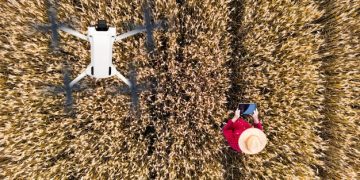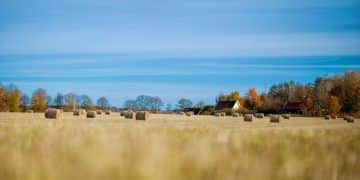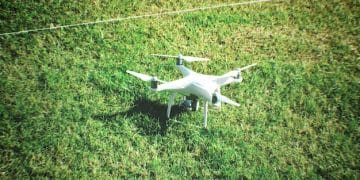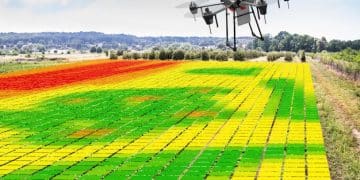US Agricultural Drone Market: Growth Segments & Opportunities in 2025
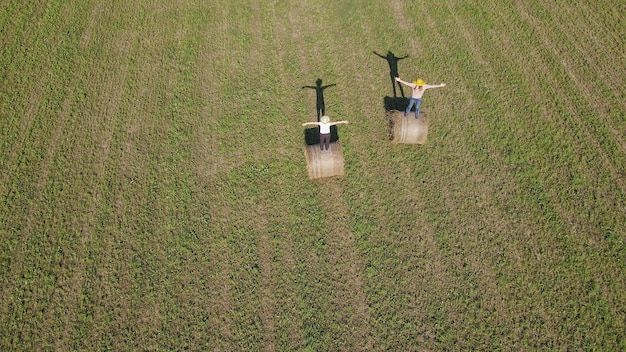
The US Agricultural Drone Market in 2025 is poised for significant expansion, driven by precision agriculture, increased efficiency, and technological advancements, presenting substantial investment opportunities in key segments like data analytics, spraying systems, and drone manufacturing.
The US Agricultural Drone Market: Identifying Key Growth Segments and Investment Opportunities in 2025 is rapidly evolving, with drones playing an increasingly crucial role in modern farming practices. These unmanned aerial vehicles (UAVs) offer farmers unprecedented capabilities for monitoring crops, optimizing resource allocation, and improving overall yields.
Understanding the US Agricultural Drone Market Landscape
The US agricultural drone market is currently experiencing robust growth, driven by several factors, including the increasing adoption of precision agriculture techniques and the rising demand for efficient and sustainable farming practices. Understanding the current landscape involves examining the key players, market size, and technological trends shaping the industry.
Key Players Driving the Market
Several companies are at the forefront of the US agricultural drone market, offering a range of products and services. These include drone manufacturers, software developers, and service providers.
- DJI: The world’s largest drone manufacturer, providing a variety of drones suitable for agricultural applications.
- PrecisionHawk: Specializes in data analytics and drone-based solutions for agriculture.
- Sentera: Offers advanced sensors and software for crop health monitoring.
Market Size and Growth Projections
The US agricultural drone market is projected to continue its upward trajectory in the coming years. The market is expected to reach significant value by 2025, driven by the increasing adoption of drones for various agricultural applications.
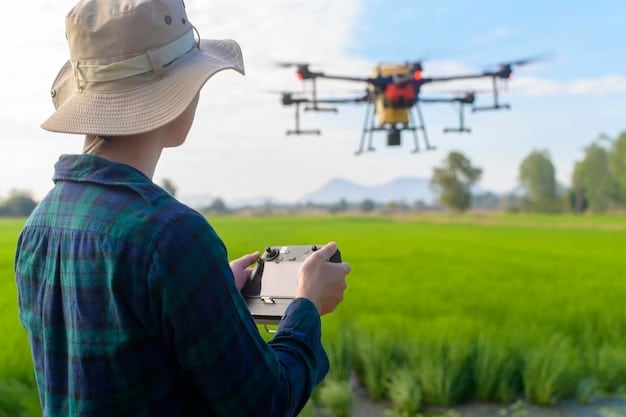
Identifying Key Growth Segments in Agricultural Drones
Several segments within the agricultural drone market are poised for significant growth in the coming years. These segments include drone hardware, software, and services, each offering unique opportunities for investment and innovation.
Drone Hardware: Advancements and Innovations
The hardware segment of the agricultural drone market includes the drones themselves, as well as related components such as sensors, cameras, and batteries. Advancements in drone technology are driving growth in this segment.
Improvements in battery technology are extending flight times and enabling drones to cover larger areas. The integration of advanced sensors and cameras is providing farmers with more detailed and accurate data.
Data Analytics: Transforming Agricultural Insights
Data analytics is a crucial component of the agricultural drone market, enabling farmers to derive actionable insights from the data collected by drones. By analyzing aerial imagery and sensor data, farmers can identify areas of concern and make informed decisions about crop management.
Companies offering data analytics services are playing a key role in the growth of the agricultural drone market. These companies provide farmers with the tools and expertise needed to interpret drone data and optimize their farming practices.
Spraying Systems: Enhancing Crop Protection
Drone-based spraying systems are gaining popularity in the agricultural sector due to their ability to precisely apply pesticides, herbicides, and fertilizers. These systems can target specific areas of a field, reducing waste and minimizing environmental impact.
- Precision Application: Drones can apply chemicals with greater precision than traditional methods, reducing the amount of chemicals needed.
- Cost-Effectiveness: Drone-based spraying systems can reduce labor costs and improve efficiency.
- Environmental Benefits: By minimizing chemical use, drones can help reduce the environmental impact of farming.
Analyzing Investment Opportunities in the US Drone Market
The US agricultural drone market presents numerous investment opportunities for both established companies and startups. These opportunities span various segments, including drone manufacturing, software development, and service provision.
Investment in Drone Manufacturing
Investing in drone manufacturing can be a lucrative opportunity, particularly for companies that can develop innovative and cost-effective drone solutions. The demand for agricultural drones is expected to continue to grow, creating a strong market for drone manufacturers.
Factors to consider when investing in drone manufacturing include the company’s research and development capabilities, manufacturing capacity, and ability to meet regulatory requirements.
Software and Data Analytics Investments
The software and data analytics segment of the agricultural drone market is ripe with investment opportunities. As farmers increasingly rely on drone data to inform their decisions, the demand for sophisticated software solutions will continue to grow.
Companies that can develop user-friendly and effective data analytics platforms are well-positioned to succeed in this market. Investment in this segment can include venture capital, private equity, and strategic partnerships.
Service-Based Opportunities
Service-based opportunities in the agricultural drone market include drone piloting, data collection, and consulting services. These services are essential for farmers who want to leverage drone technology but lack the expertise or resources to do so themselves.
Investing in service-based companies can provide a steady stream of revenue and offer opportunities for expansion. Factors to consider when investing in this segment include the company’s reputation, customer base, and ability to provide high-quality services.
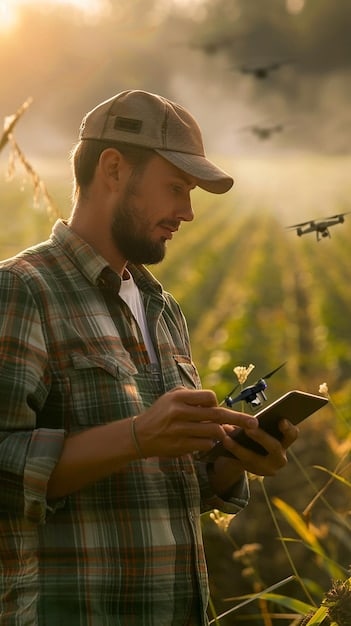
Technological Innovations Shaping the Future of Agricultural Drones
Technological innovations are continuously shaping the future of agricultural drones, making them more efficient, versatile, and user-friendly. Key innovations include advancements in sensor technology, artificial intelligence, and automation.
Advancements in Sensor Technology
Advancements in sensor technology are enabling drones to capture more detailed and accurate data about crops and soil conditions. Multi-spectral and hyperspectral sensors can detect subtle variations in plant health, allowing farmers to identify problems early and take corrective action.
Thermal sensors can be used to monitor irrigation efficiency and detect water stress in crops. These sensors provide valuable information that can help farmers optimize their water usage and improve yields.
Artificial Intelligence and Machine Learning
Artificial intelligence (AI) and machine learning (ML) are playing an increasingly important role in the agricultural drone market. AI-powered software can analyze drone data to identify patterns and trends, providing farmers with valuable insights that can help them make better decisions.
Automation and Autonomous Flights
Automation and autonomous flights are making drones easier to use and more efficient. Drones can now be programmed to fly pre-defined routes and collect data automatically, reducing the need for manual piloting.
- Automated Data Collection: Drones can collect data without human intervention, improving efficiency and reducing labor costs.
- Enhanced Accuracy: Autonomous flights ensure consistent data collection, improving the accuracy of the data.
- Improved Safety: Automated systems can reduce the risk of accidents and injuries.
Regulatory Considerations and Market Entry Strategies
Navigating the regulatory landscape is crucial for companies looking to enter the US agricultural drone market. The Federal Aviation Administration (FAA) regulates the use of drones in the United States, and companies must comply with these regulations to operate legally.
FAA Regulations for Agricultural Drones
The FAA has established regulations for the commercial use of drones, including requirements for pilot certification, drone registration, and operational restrictions. Companies must obtain a Part 107 certificate to operate drones commercially in the United States.
These regulations are designed to ensure the safety of drone operations and protect the public. Companies must stay up-to-date on the latest FAA regulations to avoid penalties and maintain compliance.
Market Entry Strategies for New Players
New players entering the US agricultural drone market should develop a well-defined market entry strategy that addresses regulatory compliance, market positioning, and competitive differentiation.
Partnering with established companies in the agricultural sector can provide access to valuable resources and expertise. Building a strong brand and reputation can help attract customers and establish a competitive advantage.
Case Studies: Successful Implementation of Agricultural Drones
Several case studies highlight the successful implementation of agricultural drones in the United States. These case studies demonstrate the benefits of using drones for crop monitoring, precision spraying, and data collection.
Crop Monitoring in California Vineyards
A California vineyard used drones to monitor the health of its grapevines. The drones captured aerial imagery that revealed areas of stress and disease, allowing the vineyard to take corrective action before the problems became widespread.
As a result, the vineyard was able to improve its yields and reduce its chemical usage. The use of drones also helped the vineyard save time and money compared to traditional monitoring methods.
The data collected by the drones also provided the vineyard with valuable insights into the growing conditions, enabling them to optimize their farming practices.
Precision Spraying in Iowa Cornfields
An Iowa cornfield used drones to apply herbicides to control weed growth. The drones were equipped with GPS technology that allowed them to precisely target the weeds, minimizing the amount of herbicide needed.
The use of drones resulted in significant cost savings and reduced the environmental impact of the herbicide application. The cornfield also saw an improvement in its yields due to the effective weed control.
The drones were able to cover a large area quickly and efficiently, making them a valuable tool for managing the cornfield.
| Key Aspect | Brief Description |
|---|---|
| 🌱 Growth Segments | Drone hardware, data analytics, spraying systems drive market growth. |
| 💰 Investment Opportunities | Drone manufacturing, software, and service sectors offer lucrative investments. |
| 🚀 Technological Innovations | AI, sensor tech, and automated flights enhance drone efficiency. |
| 📜 Regulatory Compliance | Adherence to FAA regulations is vital for legal operation in the US. |
Frequently Asked Questions
▼
Drones are primarily used for crop monitoring, precision spraying, field mapping, and assessing crop health. They can also aid in irrigation management and livestock monitoring, providing valuable insights for farmers.
▼
Farmers benefit through enhanced efficiency, cost savings, and improved yields. Drones enable precise application of resources, early detection of crop issues, and data-driven decision-making, leading to sustainable farming practices.
▼
Agricultural drones utilize various sensors, including multispectral, hyperspectral, thermal, and RGB cameras. These sensors capture different types of data, such as plant health, temperature variations, and visual imagery of the crops.
▼
Operators must comply with FAA regulations, including Part 107 certification, drone registration, and adherence to operational restrictions. Understanding and following these rules is essential for legal and safe drone operations.
▼
The market outlook is highly positive, with continued growth expected due to technological advancements, increasing adoption rates, and the rising need for sustainable agriculture. Investments and innovation will drive further expansion.
Conclusion
The US agricultural drone market is a dynamic and rapidly evolving landscape, offering significant opportunities for growth and investment. By understanding the key growth segments, technological innovations, and regulatory considerations, stakeholders can position themselves to capitalize on the increasing demand for agricultural drone technology and contribute to the future of farming.

